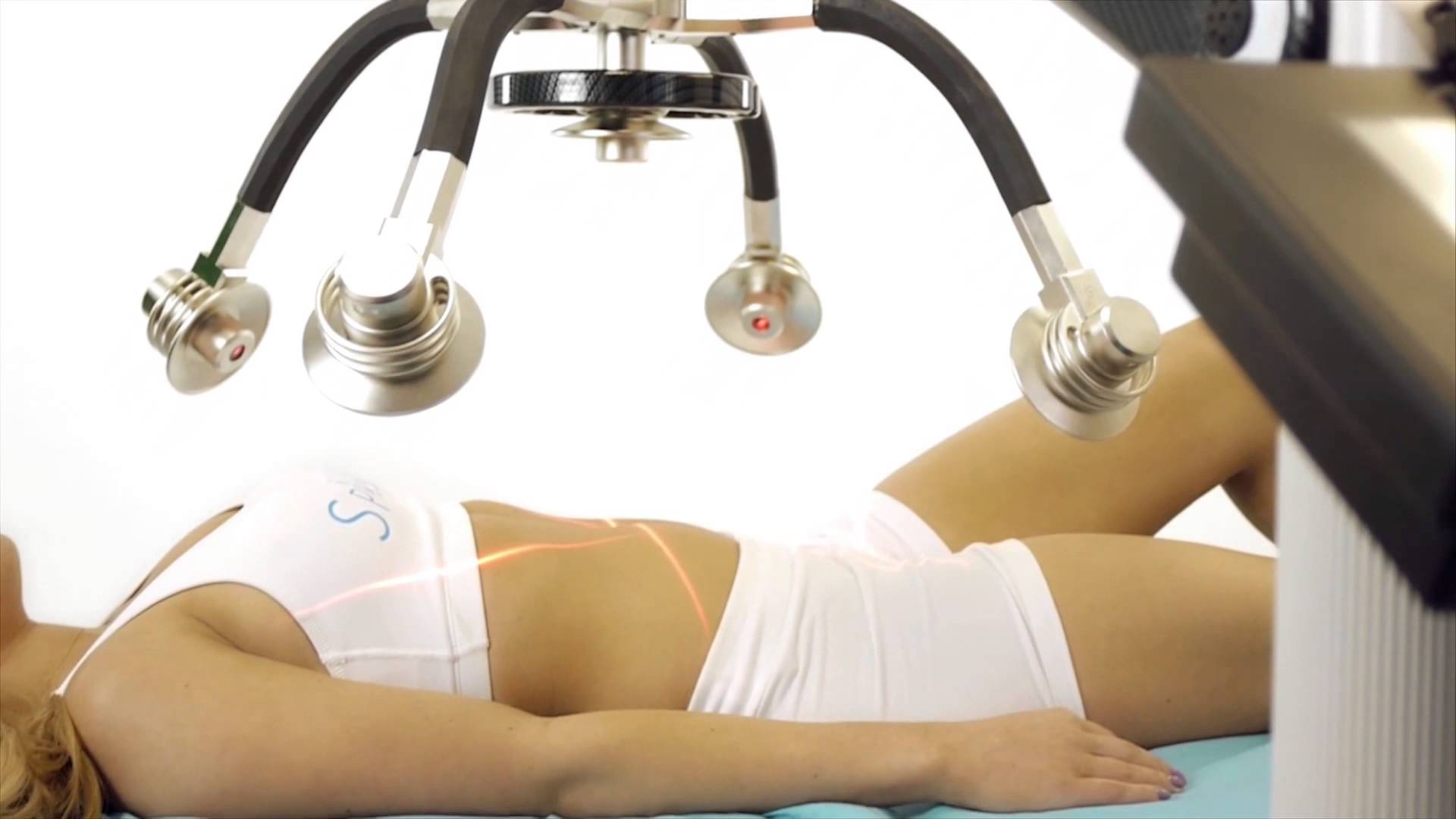- Zerona is a noninvasive procedure that promises to shave inches of fat off the body.
- According to several experts, Zerona does not live up to these claims.
- Other non-surgical fat removal procedures to consider include VelaShape and CoolSculpting.
The promise of a treatment that can shave 3.72 inches from the waist, hips or thighs is an appealing proposition for any person who wants to target these stubborn problem areas. Better yet, this is a treatment that causes zero pain, with zero downtime.
If you’re already feeling excited by the possibility of such a treatment, you’re not alone. Many have tried Zerona, a noninvasive body contouring procedure that claims to be an effective way to lose stubborn fat that can’t be eliminated through diet and exercise.
While Zerona’s results certainly seem appealing from the outset, some experts suggest that the technology does not deliver on its promises.
Austin, TX board-certified cosmetic dermatologist Dr. Daniel P. Friedmann has written text book chapters on laser-based cosmetic treatments.
He also received an award in 2014 from the American Society for Dermatologic Surgery for his article entitled “A Review of the Aesthetic Treatment of Abdominal Subcutaneous Adipose Tissue: Background, Implications and Therapeutic Options.”
We asked him to share his thoughts on Zerona.
What is Zerona?
Zerona is a noninvasive, nonsurgical fat removal treatment that uses a cold low-level laser technology via the FDA-approved Erchonia® Laser Scanner. “Although Zerona technology goes back to 2001, it was cleared by the FDA for ‘circumferential reduction of the waist, hips, and thighs’ in 2010,” informs Dr. Friedmann.
Interestingly, this cold laser technology was originally developed to assist with liposuction procedures, where it was discovered the technology could help remove fat and create a slimming effect for various parts of the body.
How does Zerona work?
Unlike other devices that rely on heating and freezing tissue, Zerona uses cold laser technology. This technology proposes to directly target the cellular contents of fat cells without damaging other types of cells and capillaries.
The low-level laser stimulation claims to disrupt the cell membrane of fat cells, basically liquefying and shrinking them while also tightening the skin.
How long does the treatment take?
During a Zerona session, you will be required to lie on your stomach and your back—20 minutes per side—while the scanner applies multiple lasers to target several areas of your body simultaneously.
To achieve the proposed results, Zerona treatment sessions are performed several times per week for a period of two weeks.
What areas can be treated with Zerona?
The Zerona laser is FDA approved for treatment of the waist, hips, thighs, arms, chest, knees, ankles, back fat and “bra fat.”
Is Zerona safe?
Zerona is a considered a very safe procedure. It is a noninvasive treatment that promises several very appealing benefits:
- No requirement for anesthesia
- No need to wear bandages
- Zero pain
- No negative effects on the skin
- No bruising or swelling
- No downtime – you can return to normal activities immediately
What results can be expected?
Randomized control trials have shown patients can lose an average 3.72 inch circumference from the waist, hips, and thighs. Overall, the actual weight loss produced is 1.5 pounds after six visits, with a reduction in body mass index (BMI) of 0.3 kg/m2.
Collectively, randomized clinical trials have shown the following results for target areas:
| Area Circumference | Average Amount Lost in Inches |
|---|---|
| Hips | 1.2 |
| Waist | 1.8 |
| Thighs | 0.9 – 1.1 |
| Upper abdomen | 1.3 |
However, according to experts who have used the technology, Zerona doesn’t deliver on its promises.
Christian Scarborough, Dr. Friedmann’s representative, shares that after investing in the Zerona technology and trying it on multiple patients across multiple practices — he even had it performed on himself and his wife — Zerona turned out to be a costly mistake. “The technology simply doesn’t work — it did nothing,” emphasizes Scarborough.
In the end, the machines were replaced with more effective treatment options.
Dr. Friedmann concurs: “Zerona had plenty of hype upon its release. Practitioners at the time were extremely excited about having a device that decreased subcutaneous fat with absolutely no pain, downtime or complications. This excitement was enough to overlook the significant limitations [simultaneous diet restrictions and exercise requirements] of the early clinical studies on the device.”
In Dr. Friedmann’s opinion, the hype surrounding Zerona outweighed common sense.
“Nevertheless, it is difficult to say that Zerona does ‘nothing.’ We know that the low level 635 nm energy emitted by the device cannot reach the fatty layer. But that does not mean there aren’t potential pathways being activated on the skin surface with downstream effects on subcutaneous fat. However, research is needed to fill the huge gaps in our understanding of the basic science behind low-level light therapy,” Dr. Friedmann adds.
How much does Zerona cost?
Since Zerona requires a minimum of six consecutive treatments to be effective, you will be required to pay a package fee for treatment.
The fees vary depending on the physician you see and where you live, but the average package price is in the range of $1,500 to $3,000.
How long does the treatment last?
If you’re looking for a long-lasting treatment, Zerona isn’t for you.
On top of a rather hefty cost, and the possibility that the treatment may be ineffective, another major downfall is that results aren’t permanent. In fact, some patients report that after just six months, all their fat had returned.
How does Zerona compare to other noninvasive procedures?
Several other non-invasive body contouring procedures promise similar results. Of these, VelaShape and CoolSculpting are two of the most popular options.
VelaShape
VelaShape treats fat cells, surrounding connective tissue, and underlying dermal collagen fibers through infrared light and bipolar radio frequency energy that deeply heats the tissues. The radio frequency, combined with infrared light energy, plus mechanical and suction massage helps to melt away the fat.
Within three months of treatment, VelaShape results in an average half-inch reduction of the abdomen and thighs, and a 0.2 inch reduction across the buttocks. Additionally, VelaShape reduces cellulite for a year or longer.
VelaShape is a temporary treatment and will require ongoing sessions every one to two months to maintain results. It costs between $150 to $600 per treatment per body area with an initial four to six weekly treatments required. Each session takes 30–40 minutes.
CoolSculpting
CoolSculpting uses an FDA-approved cryotherapy freezing technique to eliminate fat cells, also called cryolipolysis. Once the fat cells are frozen and crystallized, they die and the body eliminates them.
Compared to other noninvasive options, this is a permanent fat loss procedure—these fat cells will not return.
CoolSculpting can treat the thighs, abdomen and flank, back fat, bra fat, underneath the buttocks, and upper arm. This treatment is not designed to treat cellulite, though some people report a visible reduction for a few weeks.
In terms of results, you will see noticeable changes in as little as three weeks, with the full results of treatment visible two months after your procedures. And your body will continue to eliminate fat cells for four to six months.
Most patients choose to treat multiple areas simultaneously. The average cost ranges from $2,000 to $4,000 for an individualized treatment plan. Each session results in approximately 20–25% fat shrinkage, with most people requiring two to three treatments. Each session takes 35–60 minutes.
| Treatment | Cellulite Reduction | Duration of Results | Side Effects | Number of Treatments Required | Average Cost |
|---|---|---|---|---|---|
| VelaShape | One year or longer | Temporary, lasts 1–2 months before follow-up treatments required | Rare complications include burn | 4–6 initial treatments | $150 to $600 per treatment per body area |
| CoolSculpting | Up to a few weeks | Permanent; kills fat cells that the body eliminates | Temporary numbness, bruising and discomfort. Rare complications include freeze burn, late onset pain | 1–3 treatments to achieve individual goals | $2,000 to $4,000 for an individualized treatment plan |
| Zerona | None recorded | Temporary, lasts 6 months at best | None | 6 treatments within a 2-week period | $1,500 to $3,000 per package |
Not Weight Loss Solutions
To help maintain the results of any of these noninvasive treatments, a healthy diet and lifestyle is highly recommended.
It’s also important to recognize that these procedures aren’t weight loss solutions. “These procedures are aimed at patients who are not overweight, but have stable, targeted fat deposits,” says Dr. Friedmann.
For people who have a high BMI, excessive fat that needs to be removed, or loose skin, a surgical option such as liposuction or surgical body contouring may be more suitable.
Always discuss your goals with your plastic surgeon. They have the expertise to advise you about the right treatment to suit your individual needs.









